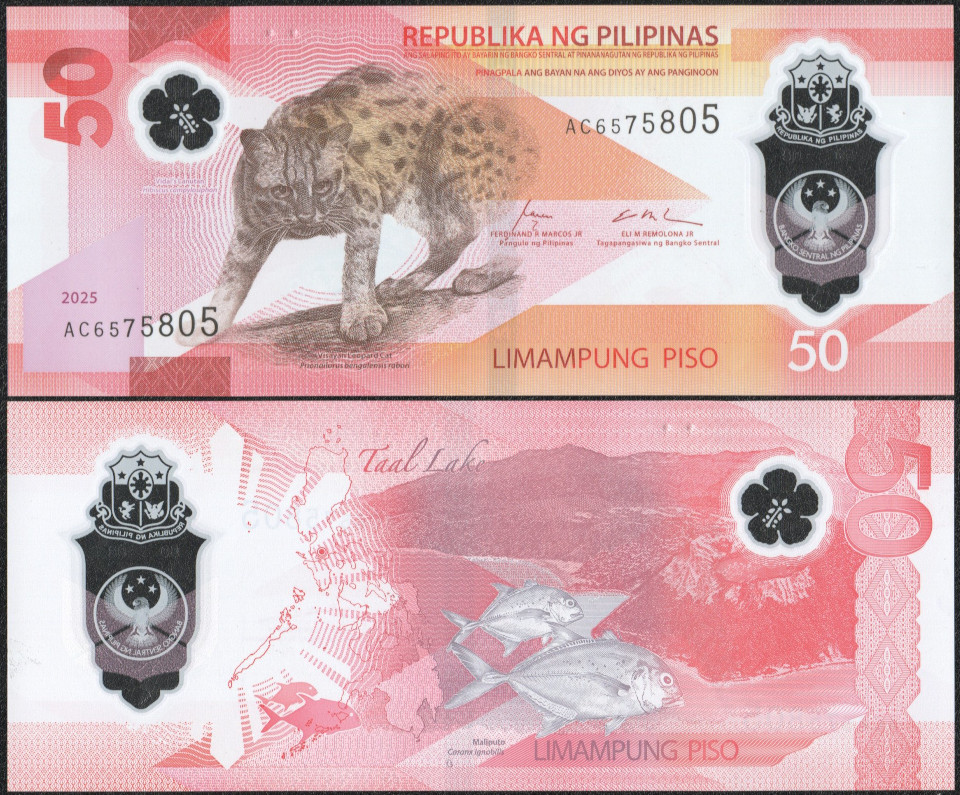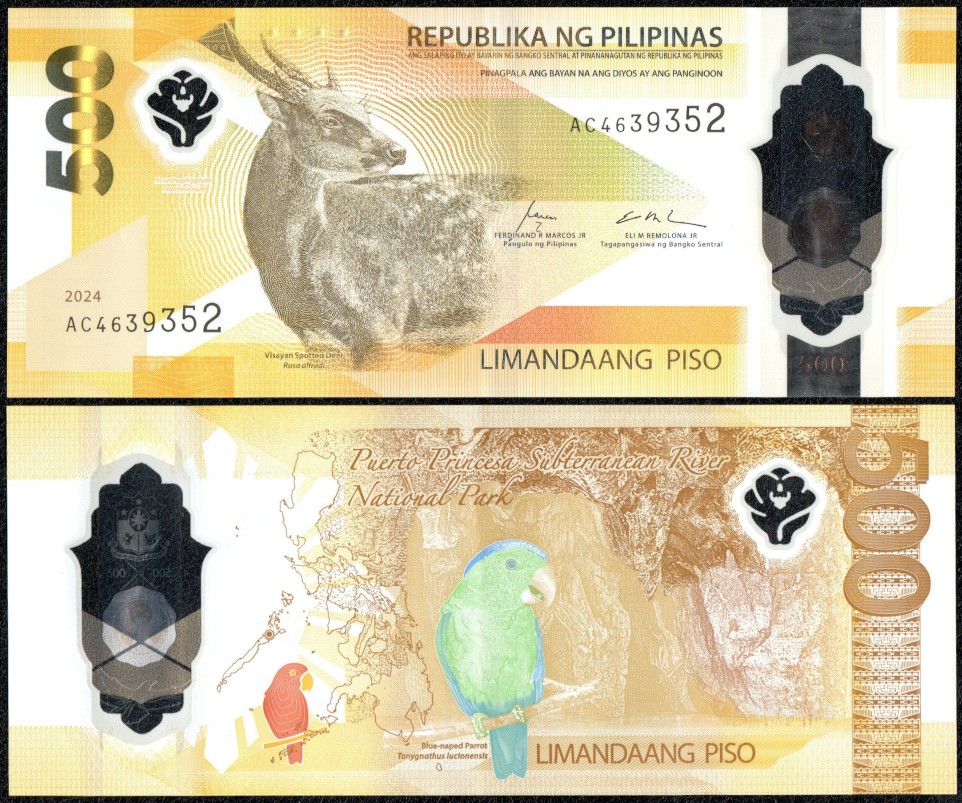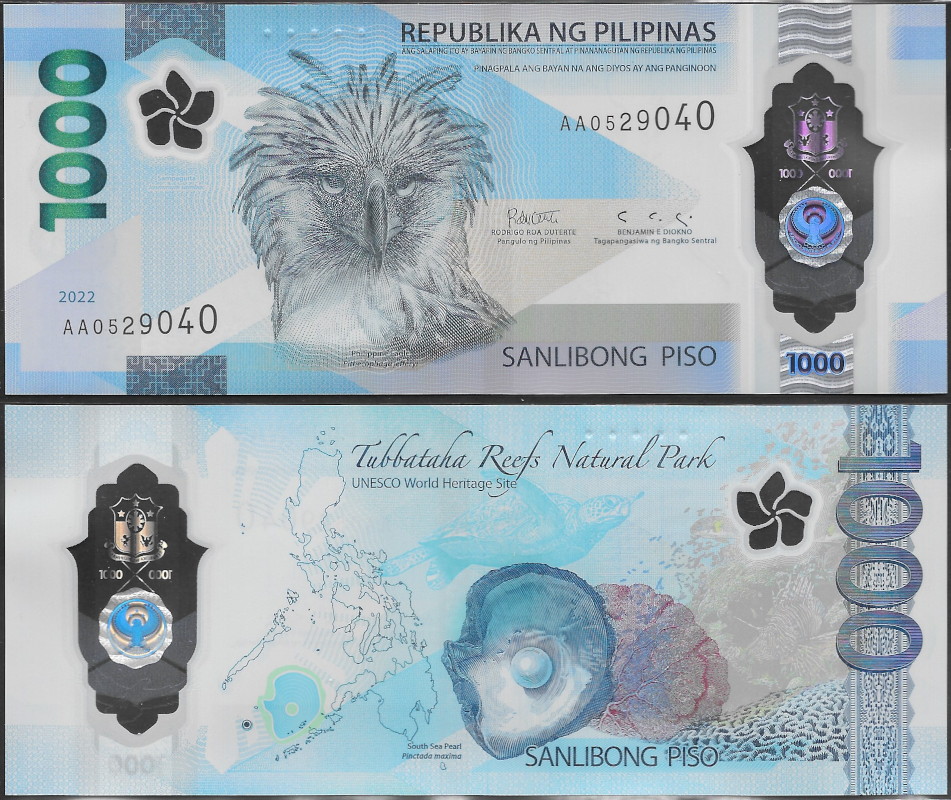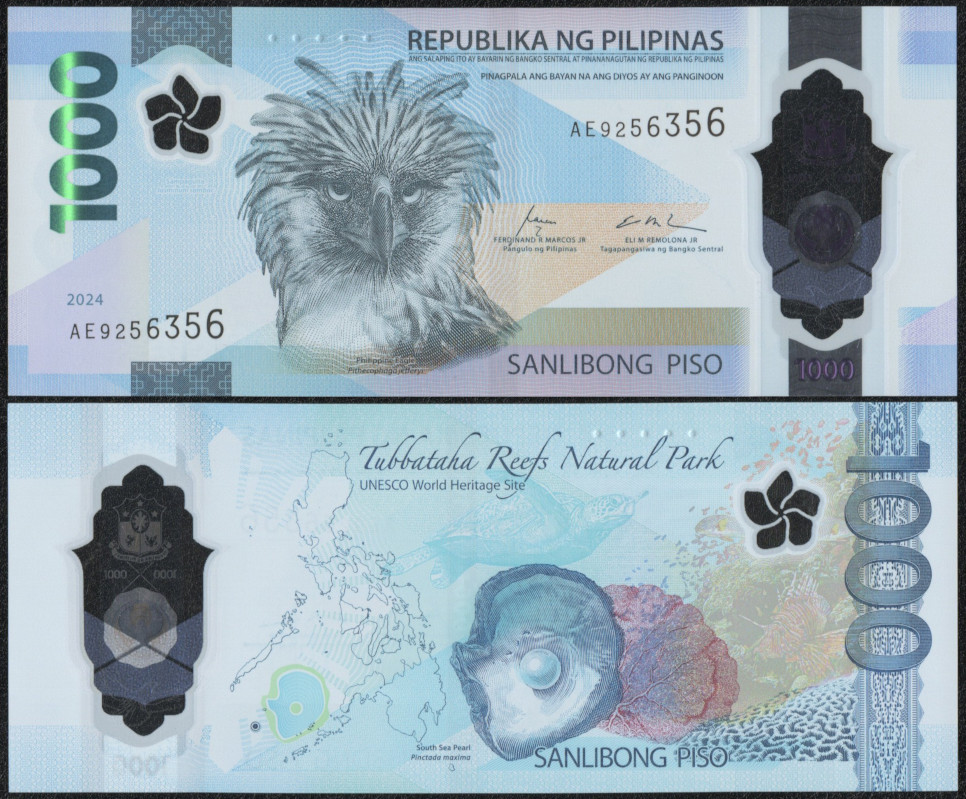Part 14 of the History of Philippine Paper Money showcases the first polymer banknotes to be released in the Philippines.
The Bangko Sentral ng Pilipinas (BSP) partnered with Note Printing Australia (NPA), a subsidiary of the Australian Central Bank to initially produce the 1,000 piso polymer banknote. Other denominations were added soon after. Australia was the first country to release a full set of polymer banknotes (1992-1996) and NPA produces polymer banknotes for a number of different countries – making the partnership a “no brainer” for the BSP. Polymer notes offer better security, are longer lasting/better wearing and much harder to forge than paper notes. The printing process also allows for richer colors and bolder designs. While polymer notes might be more expensive to initially produce their longevity means cost savings over time, since banknotes are in circulation for longer.
With the release of the First Philippine Polymer Banknote Series 2 major changes were made. Firstly the 200 piso banknote was not produced as it was agreed in 2021 that the 200 piso note would be discontinued. Also, sine the 20 piso coin was released in 2019, this series no longer has a 20 piso note. The notes produced as part of the polymer series are therefore in denominations of 1000, 500, 100 and 50 piso only.
Read on for Uncirculated Commemorative Banknotes.






